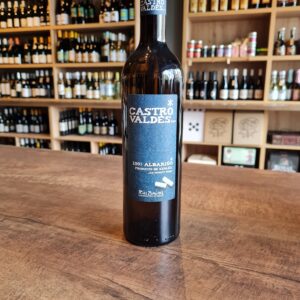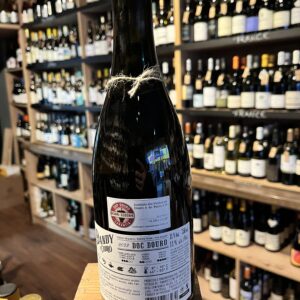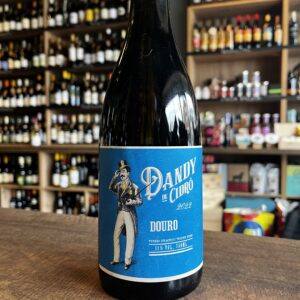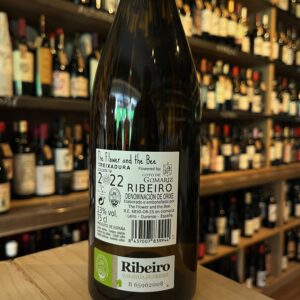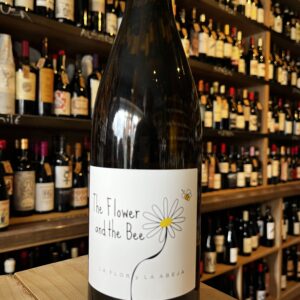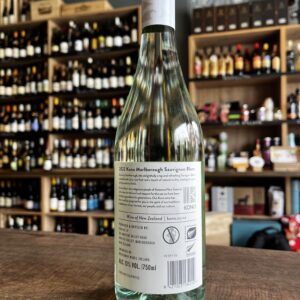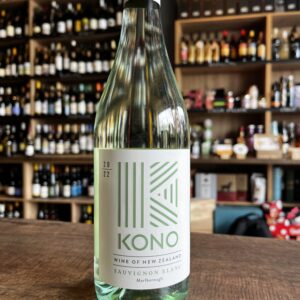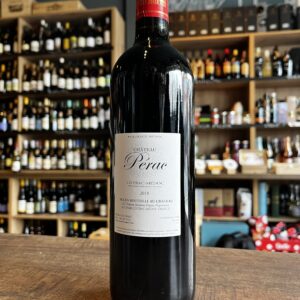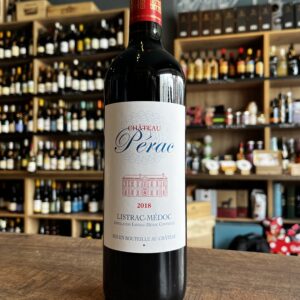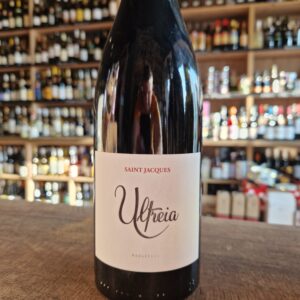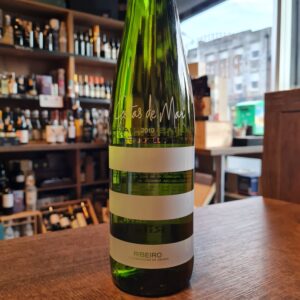-
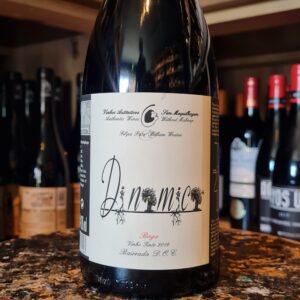 Filipa Pato is the confirmation of the old saying "son of fish knows how to swim". Although she followed the footsteps of her father Luís Pato, even in her academic training, Filipa always wanted to have her own world, her own project, where she would show her ideas, and go up with her own pulse. It was the 2001 harvest, a great year in Bairrada, which would provide all of this. That year, she decided to walk on her own feet, creating her dream. The success was immediate, and soon she rose to the status of one of the most brilliant winemakers in Portugal. The wines are the result of Filipa's innovative and brilliant spirit. They were quickly at the forefront of national and international criticism. In 2011, with her husband William Wouters, a prestigious Belgian Sommelier and owner of the Pazzo restaurant in Antwerp, Filipa receives the title "Newcomer of the year".
Filipa Pato is the confirmation of the old saying "son of fish knows how to swim". Although she followed the footsteps of her father Luís Pato, even in her academic training, Filipa always wanted to have her own world, her own project, where she would show her ideas, and go up with her own pulse. It was the 2001 harvest, a great year in Bairrada, which would provide all of this. That year, she decided to walk on her own feet, creating her dream. The success was immediate, and soon she rose to the status of one of the most brilliant winemakers in Portugal. The wines are the result of Filipa's innovative and brilliant spirit. They were quickly at the forefront of national and international criticism. In 2011, with her husband William Wouters, a prestigious Belgian Sommelier and owner of the Pazzo restaurant in Antwerp, Filipa receives the title "Newcomer of the year". -
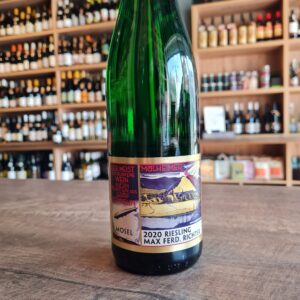 Max Ferdinand Richter winery produces this classic off-dry Mosel Riesling from the Mulheimer Sonnenlay vineyard. The bottle features a beautiful Art Deco label depicting the Zeppelin airships upon which this Riesling was served in the 1920's and 30's. "The Mülheimer Sonnenlay is the largest single Richter vineyard and the source of the world-renowned “Zeppelin” Riesling. The vineyard sits on the west-southwestern side of a slate stone hill south of Mülheim, a dry riverbed formed during the last ice age 250,000 years ago. The name of the vineyard– Sonne (sunshine) and lay (slate stone) –perfectly describes the characteristics of the site. This often extremely steep vineyard has a loose slate stone soil structure that is enriched by pebbles, loam and sand deposited by the ancient river. This kind of soil creates wines that combine typical slate stone mineral character with animated and elegant fruitiness." When possible, they utilize natural yeasts and eschew chemical fining agents. Max Ferdinand Richter’s 48 steep acres are spread out in the Middle Mosel Valley between Erden and Brauneberg. Plantings consist of 95% Riesling and 5% Pinot Blanc grapes. The average age of Richter vines is 40 years. "Wines from the Mülheimer Sonnenlay were served on the luxurious Zeppelin airships -including the Hindenburg - in the 1920s and 30s. Local growers, proud of this distinction, commissioned Bauhaus artist Hans Schlösser to design a label for the wine incorporating the iconic Zeppelin airship. The label is still featured today."
Max Ferdinand Richter winery produces this classic off-dry Mosel Riesling from the Mulheimer Sonnenlay vineyard. The bottle features a beautiful Art Deco label depicting the Zeppelin airships upon which this Riesling was served in the 1920's and 30's. "The Mülheimer Sonnenlay is the largest single Richter vineyard and the source of the world-renowned “Zeppelin” Riesling. The vineyard sits on the west-southwestern side of a slate stone hill south of Mülheim, a dry riverbed formed during the last ice age 250,000 years ago. The name of the vineyard– Sonne (sunshine) and lay (slate stone) –perfectly describes the characteristics of the site. This often extremely steep vineyard has a loose slate stone soil structure that is enriched by pebbles, loam and sand deposited by the ancient river. This kind of soil creates wines that combine typical slate stone mineral character with animated and elegant fruitiness." When possible, they utilize natural yeasts and eschew chemical fining agents. Max Ferdinand Richter’s 48 steep acres are spread out in the Middle Mosel Valley between Erden and Brauneberg. Plantings consist of 95% Riesling and 5% Pinot Blanc grapes. The average age of Richter vines is 40 years. "Wines from the Mülheimer Sonnenlay were served on the luxurious Zeppelin airships -including the Hindenburg - in the 1920s and 30s. Local growers, proud of this distinction, commissioned Bauhaus artist Hans Schlösser to design a label for the wine incorporating the iconic Zeppelin airship. The label is still featured today." -
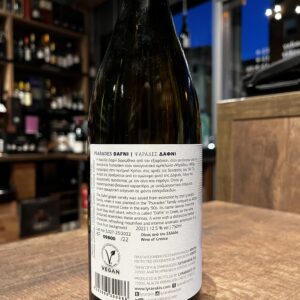
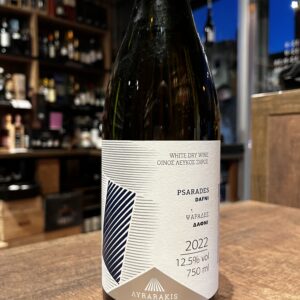 The Dafni grape variety was saved from extiction by the Lyrarakis family, when it was planted in the ''Psarades'' family vineyard at 480m altitude in central Crete in the early 90's. It's name derives from the laurel (bay leaf) plant, which its called ''Dafni'' in Greek, as the wines produced resembles these aromas. Pair with fried small Fish, seafood like cuttlefish with spinach, white meat, pulses and pies with greens and aromatic herbs
The Dafni grape variety was saved from extiction by the Lyrarakis family, when it was planted in the ''Psarades'' family vineyard at 480m altitude in central Crete in the early 90's. It's name derives from the laurel (bay leaf) plant, which its called ''Dafni'' in Greek, as the wines produced resembles these aromas. Pair with fried small Fish, seafood like cuttlefish with spinach, white meat, pulses and pies with greens and aromatic herbs -
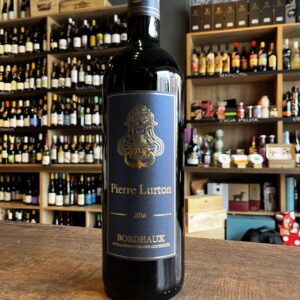 Bordeaux Pierre Lurton is a wine produced by Pierre Lurton in his namesake wine cellars. He draws directly from his knowledge acquired in the most prestigious properties of Bordeaux. Thus, this wine is rigorously selected by Pierre Lurton.The colour of the label also reflects the classic colour of the mansions of Gironde´s capital.
Bordeaux Pierre Lurton is a wine produced by Pierre Lurton in his namesake wine cellars. He draws directly from his knowledge acquired in the most prestigious properties of Bordeaux. Thus, this wine is rigorously selected by Pierre Lurton.The colour of the label also reflects the classic colour of the mansions of Gironde´s capital. -
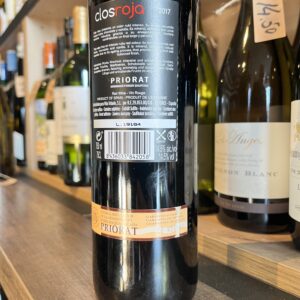
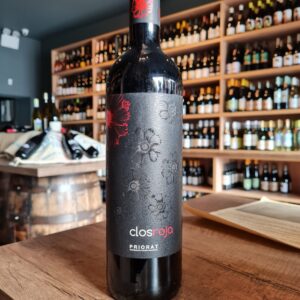 This is one of our favourite wine-finds of late! Priorat, a wine region in northeastern Spain, is known for stunning, terraced vineyards and robust red blends that often fetch a pretty penny. An old vine blend of Grenache, Carignan, Syrah, Cabernet and Merlot finished in French and American oak barrels. Notes of red cherry, chocolate define this silky & balanced wine! Lovely with Red meats, blue cheese or Chocolate.
This is one of our favourite wine-finds of late! Priorat, a wine region in northeastern Spain, is known for stunning, terraced vineyards and robust red blends that often fetch a pretty penny. An old vine blend of Grenache, Carignan, Syrah, Cabernet and Merlot finished in French and American oak barrels. Notes of red cherry, chocolate define this silky & balanced wine! Lovely with Red meats, blue cheese or Chocolate. -
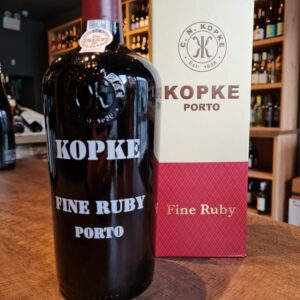 There are special places in the world. Kopke found one of them. Quinta de São Luiz is located on the left bank of the river Douro, near Pinhão, in the parish of Tabuaço. It is an imposing estate, considered one of the most emblematic of the Douro region. The Quinta has gone through two major changes: on the one hand, the construction of the Bagaúste dam, with the consequent rise of the water level and the loss of vineyard land; on the other, the enlargement of the total area with the acquisition of several other properties in the area. The estate is made up of 125 hectares, 90 of which are planted with vines. The main grape varieties grown here are Touriga Nacional, Touriga Franca, Tinta Roriz, Tinta Cão. There are also small plots of Tinta Barroca and Souzão. The vines are classified as A, the highest grade in the Demarcated Region of the Douro.
There are special places in the world. Kopke found one of them. Quinta de São Luiz is located on the left bank of the river Douro, near Pinhão, in the parish of Tabuaço. It is an imposing estate, considered one of the most emblematic of the Douro region. The Quinta has gone through two major changes: on the one hand, the construction of the Bagaúste dam, with the consequent rise of the water level and the loss of vineyard land; on the other, the enlargement of the total area with the acquisition of several other properties in the area. The estate is made up of 125 hectares, 90 of which are planted with vines. The main grape varieties grown here are Touriga Nacional, Touriga Franca, Tinta Roriz, Tinta Cão. There are also small plots of Tinta Barroca and Souzão. The vines are classified as A, the highest grade in the Demarcated Region of the Douro. -
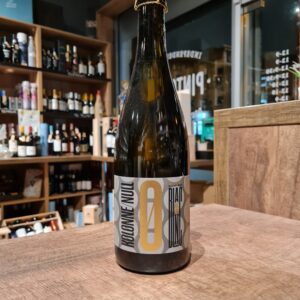 Delicious alcohol-free sparkling wine from Kolonne Null, made in Germany. The Freiherr von Gleichenstein winery has been synonymous with quality, professionalism and passion for almost 400 years. The wines remain recognizable by the distinctive flint minerality of the Kaiserstuhl. Well-coordinated team, complex high-end wines and long-lasting relationships are hallmarks of the South Baden winery culture. Excellent as an aperitif or as an accompaniment to fine canapes, seafood, fresh desserts such as zabaglione and panna cotta with fruits.
Delicious alcohol-free sparkling wine from Kolonne Null, made in Germany. The Freiherr von Gleichenstein winery has been synonymous with quality, professionalism and passion for almost 400 years. The wines remain recognizable by the distinctive flint minerality of the Kaiserstuhl. Well-coordinated team, complex high-end wines and long-lasting relationships are hallmarks of the South Baden winery culture. Excellent as an aperitif or as an accompaniment to fine canapes, seafood, fresh desserts such as zabaglione and panna cotta with fruits. -
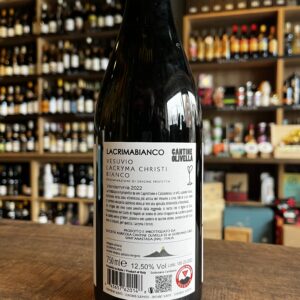
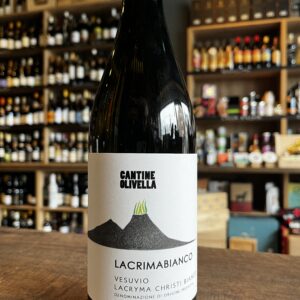 The native roots of the rare and unique grapes found in this ancient yet active volcano and the passion of local talent Andrea Cozzolino that was eager to breathe new life into one of Campania’s most historic wine regions would make Dionysus, god of the wine proud. Here on the slopes of Monte Summa Close to the ''Olivella'' Spring (where the winery takes its name), is the oldest part of Vesuvio (the volcano that destroyed Pompeii and continues to rumble, shaking the nerves of the Napolitani) grape growing is an ancient art, the lava-rich, sandy slopes of the volcano providing perfect terroir for native grapes such as Catalanesca and Piedirosso. In 1974, an ancient fragment of an earthenware wine jug was discovered. This is proof of the wealth of an area whose wines were some of the finest of ancient Rome on the market with Pompeii. An abbreviated inscription of “Sextus Catius Festus” is engraved on the opening of the earthenware jar along with a seal depicting a stylized leaf, similar to a heart. The seal tellingly became the logo for “Cantine Olivella”, and was modified into a wine glass. This is the perfect representation of the union between land, art and passion, namely three hearts beating in unison in the world of Cantine Olivella. Great served chilled as an appetiser or with fresh fish, shellfish; creamy fish soup or risotto
The native roots of the rare and unique grapes found in this ancient yet active volcano and the passion of local talent Andrea Cozzolino that was eager to breathe new life into one of Campania’s most historic wine regions would make Dionysus, god of the wine proud. Here on the slopes of Monte Summa Close to the ''Olivella'' Spring (where the winery takes its name), is the oldest part of Vesuvio (the volcano that destroyed Pompeii and continues to rumble, shaking the nerves of the Napolitani) grape growing is an ancient art, the lava-rich, sandy slopes of the volcano providing perfect terroir for native grapes such as Catalanesca and Piedirosso. In 1974, an ancient fragment of an earthenware wine jug was discovered. This is proof of the wealth of an area whose wines were some of the finest of ancient Rome on the market with Pompeii. An abbreviated inscription of “Sextus Catius Festus” is engraved on the opening of the earthenware jar along with a seal depicting a stylized leaf, similar to a heart. The seal tellingly became the logo for “Cantine Olivella”, and was modified into a wine glass. This is the perfect representation of the union between land, art and passion, namely three hearts beating in unison in the world of Cantine Olivella. Great served chilled as an appetiser or with fresh fish, shellfish; creamy fish soup or risotto -
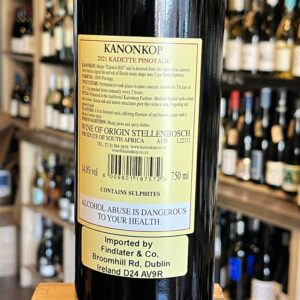
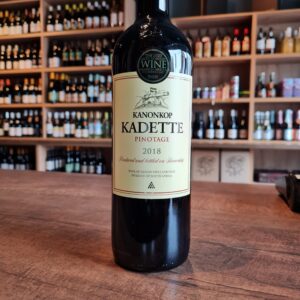 The Kanonkop Kadette Pinotage 2021 shows intense purple hues with lively aromas of fresh plums, mulberries and allspice, followed by a meaty undertone. The palate displays an inherent earthy touch, with flavours of crimson beetroot and maraschino cherries. Wonderful coherent balance between the fruit and the fresh acidity, with muscular support from the tightly woven tannin structure.
The Kanonkop Kadette Pinotage 2021 shows intense purple hues with lively aromas of fresh plums, mulberries and allspice, followed by a meaty undertone. The palate displays an inherent earthy touch, with flavours of crimson beetroot and maraschino cherries. Wonderful coherent balance between the fruit and the fresh acidity, with muscular support from the tightly woven tannin structure. -
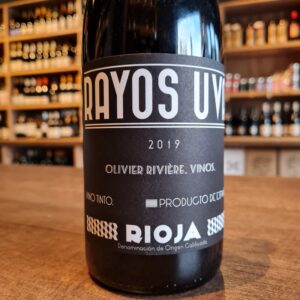 Olivier Riviere, founder and winemaker at Rayos Uva Rioja, is originally from Cognac. He studied in St-Emilion and then made wine in southern France and Burgundy before moving to Ribera del Duero in 2004, when he started leasing land and purchasing fruit for his new Spanish blends. Finally, in 2013, Olivier bought his first 3.5 acres in Rioja Alavesa; Rayos Uva is now in its sixth vintage. Olivier's holdings are substantially larger now, but he still sources fruit from his favorite bodegas. Grown by Bodegas Lacus where Olivier is also the winemaker, this 2021 is a blend of hand-harvested Tempranillo and Graciano that is semi-carbonically fermented in tanks with wild yeasts. Aged 10-12 months in tank and concrete foudre. An exciting Rioja with a French artisanal sensibility. Slightly filtered. It is recommended to open the bottle half an hour before consuming it to express the true potential.
Olivier Riviere, founder and winemaker at Rayos Uva Rioja, is originally from Cognac. He studied in St-Emilion and then made wine in southern France and Burgundy before moving to Ribera del Duero in 2004, when he started leasing land and purchasing fruit for his new Spanish blends. Finally, in 2013, Olivier bought his first 3.5 acres in Rioja Alavesa; Rayos Uva is now in its sixth vintage. Olivier's holdings are substantially larger now, but he still sources fruit from his favorite bodegas. Grown by Bodegas Lacus where Olivier is also the winemaker, this 2021 is a blend of hand-harvested Tempranillo and Graciano that is semi-carbonically fermented in tanks with wild yeasts. Aged 10-12 months in tank and concrete foudre. An exciting Rioja with a French artisanal sensibility. Slightly filtered. It is recommended to open the bottle half an hour before consuming it to express the true potential. -
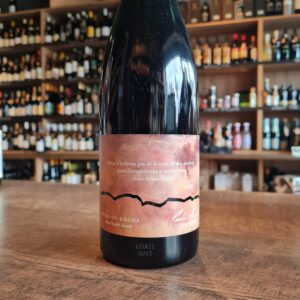 Vincent Rochette comes from a long line of grape growers rather than winemakers. In 1998, he bucked that trend by investing in a cellar and the necessary equipment to allow him to vinify his own grapes, which for five generations had been sold to other winemakers in the area. Vincent is an ardent believer in the benefits of biodynamics, fully converting his estate to follow that philosophy in 2006. He uses only natural products in the vineyard and carries out all his work in keeping with the cosmic cycles of the earth, not only among the vines but also in the cellar. One of his most interesting cuvées is the Côte du Rhone ‘Nature’, which has had no sulphites added at any stage of the winemaking process. Due to the fact that sulphites are naturally present in grapes, there are still 9mg present (below the legal 10mg limit which is required to state that the wine contains sulphites). The result is a wine that is simply a pure expression of Grenache and Syrah. Harvesting, racking and bottling are all carried out in accordance with cosmic rhythms. A delicious wine to consume today, with grills, summer salads, spicy dishes such as couscous, a tagine with candied fruits (apricots, lemons, onions, etc.)
Vincent Rochette comes from a long line of grape growers rather than winemakers. In 1998, he bucked that trend by investing in a cellar and the necessary equipment to allow him to vinify his own grapes, which for five generations had been sold to other winemakers in the area. Vincent is an ardent believer in the benefits of biodynamics, fully converting his estate to follow that philosophy in 2006. He uses only natural products in the vineyard and carries out all his work in keeping with the cosmic cycles of the earth, not only among the vines but also in the cellar. One of his most interesting cuvées is the Côte du Rhone ‘Nature’, which has had no sulphites added at any stage of the winemaking process. Due to the fact that sulphites are naturally present in grapes, there are still 9mg present (below the legal 10mg limit which is required to state that the wine contains sulphites). The result is a wine that is simply a pure expression of Grenache and Syrah. Harvesting, racking and bottling are all carried out in accordance with cosmic rhythms. A delicious wine to consume today, with grills, summer salads, spicy dishes such as couscous, a tagine with candied fruits (apricots, lemons, onions, etc.) -
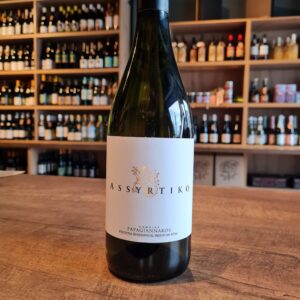 Founded in 1919, Domaine Papagiannakos is located in the Attica region of Central Greece, just 18 miles from Athens. Today, the winery is run by the 3rd generation, Vassilis Papagiannakos, who has issued a new era of modern winemaking while still maintaining the family’s dedication to cultivating and preserving the region’s most famous indigenous grape, Savatiano. In addition the Domaine has plant Malagousia and Assyrtiko. The Assyrtiko vineyards are located in northeastern Attica at an altitude of 330 feet. The vineyard has a northeastern facing exposure. The vineyard is farmed without irrigation, resulting in low-yielding vines that produce grapes with rich, concentrated fruit flavors. The limestone soil and the unique microclimate of the region produces wine with a very clean and crisp profile with citrus and white flesh aromas.The acidity is very well integrated into the wine and gives the ability for long aging. With aging the wine develops a beautiful mineral character. The refreshing character of the wine makes it an ideal accompaniment for seafood, fish, white meat, and Mediterranean cuisine.
Founded in 1919, Domaine Papagiannakos is located in the Attica region of Central Greece, just 18 miles from Athens. Today, the winery is run by the 3rd generation, Vassilis Papagiannakos, who has issued a new era of modern winemaking while still maintaining the family’s dedication to cultivating and preserving the region’s most famous indigenous grape, Savatiano. In addition the Domaine has plant Malagousia and Assyrtiko. The Assyrtiko vineyards are located in northeastern Attica at an altitude of 330 feet. The vineyard has a northeastern facing exposure. The vineyard is farmed without irrigation, resulting in low-yielding vines that produce grapes with rich, concentrated fruit flavors. The limestone soil and the unique microclimate of the region produces wine with a very clean and crisp profile with citrus and white flesh aromas.The acidity is very well integrated into the wine and gives the ability for long aging. With aging the wine develops a beautiful mineral character. The refreshing character of the wine makes it an ideal accompaniment for seafood, fish, white meat, and Mediterranean cuisine. -
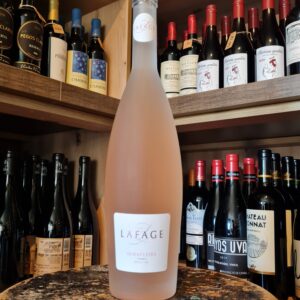 Fantastic Rosé! This organic beauty is just about as good as Rosé can get… beautiful bouquet of roses, strawberry and white peach. The palate is round, polished, silky and wonderfully balanced between fruity generosity and refreshing, minerally more-ishness. Grab some of this wine for summer while you can. It will sell out! It is another beauty that is clean, pure, has textured and elegant on the palate, with gorgeous purity, it’s a rocking rosé that does everything right. Its freshness and good acidity makes it the perfect companion for snacks and fresh dishes, fruit salads, grilled white fish without sauces, vegetable salads and the legendary pasta salads. In short, a wine to drink and taste at all hours.
Fantastic Rosé! This organic beauty is just about as good as Rosé can get… beautiful bouquet of roses, strawberry and white peach. The palate is round, polished, silky and wonderfully balanced between fruity generosity and refreshing, minerally more-ishness. Grab some of this wine for summer while you can. It will sell out! It is another beauty that is clean, pure, has textured and elegant on the palate, with gorgeous purity, it’s a rocking rosé that does everything right. Its freshness and good acidity makes it the perfect companion for snacks and fresh dishes, fruit salads, grilled white fish without sauces, vegetable salads and the legendary pasta salads. In short, a wine to drink and taste at all hours. -
 In 2003, José Ribeiro Vieira purchased a four hectare vineyard in the foothills of Serra de Aire of Cortes, in the Alta Estremadura, near Lisbon. Vale da Mata pays tribute to Vieira’s winemaker father, Manuel, who claimed that Vale de Mata was the site where he succeeded in producing his best wines. The Vale de Mata project respects the expression of its terroir, cultivating the vines sustainably and using minimal intervention in the winery. Manuel gave this wine its name and his granddaughter Catarina Viera has followed in his footsteps, continuing his winemaking legacy. In 2018. Vale da Mata is the name of a small, old vineyard located in the foothills of Serra de Aire, in Cortes. The vineyard has a maritime climate and is influenced by the Atlantic Ocean. The parcel is just a few hectares and is situated on a steep terrain with rocky soil. The land is extremely hard to work and is cultivated manually, with winter pruning and green harvesting taking place by hand. Protected to the north, it has good sunlight exposure throughout the day and is surrounded by olive trees, fig trees, walnuts and shrubs. Vale de Mata is associated with several sustainable programmes; they are a member of the FSC and grow all their grapes according to organic philosophies. The vines are trained according to the Cordon Royat method and the grapes are manually harvested at optimum maturity.
In 2003, José Ribeiro Vieira purchased a four hectare vineyard in the foothills of Serra de Aire of Cortes, in the Alta Estremadura, near Lisbon. Vale da Mata pays tribute to Vieira’s winemaker father, Manuel, who claimed that Vale de Mata was the site where he succeeded in producing his best wines. The Vale de Mata project respects the expression of its terroir, cultivating the vines sustainably and using minimal intervention in the winery. Manuel gave this wine its name and his granddaughter Catarina Viera has followed in his footsteps, continuing his winemaking legacy. In 2018. Vale da Mata is the name of a small, old vineyard located in the foothills of Serra de Aire, in Cortes. The vineyard has a maritime climate and is influenced by the Atlantic Ocean. The parcel is just a few hectares and is situated on a steep terrain with rocky soil. The land is extremely hard to work and is cultivated manually, with winter pruning and green harvesting taking place by hand. Protected to the north, it has good sunlight exposure throughout the day and is surrounded by olive trees, fig trees, walnuts and shrubs. Vale de Mata is associated with several sustainable programmes; they are a member of the FSC and grow all their grapes according to organic philosophies. The vines are trained according to the Cordon Royat method and the grapes are manually harvested at optimum maturity. -
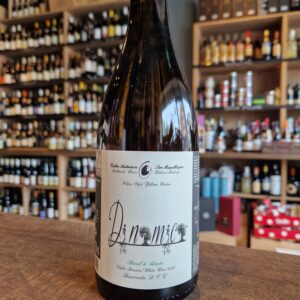 Filipa Pato and husband, William Wouters have created an expressive range of wines representing the native grape varietals of the Barriada region. Their philosophy is simple: "create authentic wines without make-up to express the true nature of the vineyards they come from". Bairrada is a coastal DOC which borders Vinho Verde, Dão and Lisboa. It has mild and wet winters and hot windy summers. The climatic thermal range, brought about by the Atlantic influence, brings high acidity and freshness to the grapes here. Filipa and William practice biodynamic viticulture and are undergoing conversion to organic certification. The wine is unfined. Drink with sheep and goats cheese, dressed salads, and delicate poultry dishes.
Filipa Pato and husband, William Wouters have created an expressive range of wines representing the native grape varietals of the Barriada region. Their philosophy is simple: "create authentic wines without make-up to express the true nature of the vineyards they come from". Bairrada is a coastal DOC which borders Vinho Verde, Dão and Lisboa. It has mild and wet winters and hot windy summers. The climatic thermal range, brought about by the Atlantic influence, brings high acidity and freshness to the grapes here. Filipa and William practice biodynamic viticulture and are undergoing conversion to organic certification. The wine is unfined. Drink with sheep and goats cheese, dressed salads, and delicate poultry dishes. -
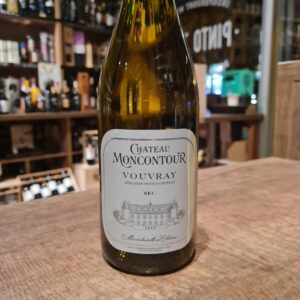 Since 1994, the Montcountour vineyards are owned and controlled by the Feray family. These wines are currently produced from six high-quality wine estates located across the Loire Valley. The vines that were grown on the steep slopes of the valley were covered with hard rocks and caves to protect the history and maintain the mystery of these impeccable vines. These terroirs are known for their exceptional climatic conditions and diverse soils. The Feudal building has survived the centuries and has seen many personalities from the court and the arts stay there, a dependency of the Bishopric of tours under Saint-Martin in the 4th century. The current building dates from the renaissance and was erected by King Charles VII who offered it to Agnès Sorel, his lady of Beauty. Partly burnt down during the French Revolution, the building was rehabilitated; then, in 1846, the Touraine writer Honoré de Balzac wanted to buy it, wanted it in vain, to live there with his fervent admirer and wife Evelyne Hanska. On June 10, 1846, he wrote to his wife and one could read in this letter the still famous formula: "Moncontour is my predilection".
Since 1994, the Montcountour vineyards are owned and controlled by the Feray family. These wines are currently produced from six high-quality wine estates located across the Loire Valley. The vines that were grown on the steep slopes of the valley were covered with hard rocks and caves to protect the history and maintain the mystery of these impeccable vines. These terroirs are known for their exceptional climatic conditions and diverse soils. The Feudal building has survived the centuries and has seen many personalities from the court and the arts stay there, a dependency of the Bishopric of tours under Saint-Martin in the 4th century. The current building dates from the renaissance and was erected by King Charles VII who offered it to Agnès Sorel, his lady of Beauty. Partly burnt down during the French Revolution, the building was rehabilitated; then, in 1846, the Touraine writer Honoré de Balzac wanted to buy it, wanted it in vain, to live there with his fervent admirer and wife Evelyne Hanska. On June 10, 1846, he wrote to his wife and one could read in this letter the still famous formula: "Moncontour is my predilection". -
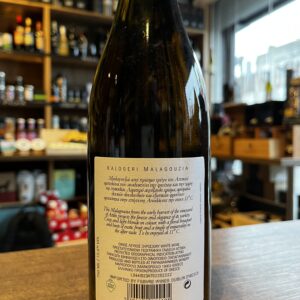
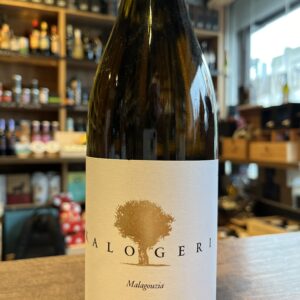 Domaine Papagiannakos was established in 1919 in the heart of the plain of Mesogaia, Attica - just 30km from the shadow of the Acropolis. Third generation winemaker, Vassilis Papagiannakos, was born and bred in Markopoulo, and grew up around the family winery. At that time the Savatiano variety was the winery' s sole focus - but later Malagouzia was introduced, along with Cabernet Sauvignon, Merlot and other varieties. Vassilis owns 10 hectares of vineyard in the Attica region, and maintains long-term leases on a further 20 hectares, with vines on average 50-60 years old. Rocky, sandy, clay topsoil nurtures low yielding bush vines - extremely limited irrigation is employed. The Papagiannakos family continues its traditions whilst bringing the winery into the 21st Century with a stunning and innovative bioclimatic winery. Pair it with Fish Fried, Poultry Casseroles White, Risotto
Domaine Papagiannakos was established in 1919 in the heart of the plain of Mesogaia, Attica - just 30km from the shadow of the Acropolis. Third generation winemaker, Vassilis Papagiannakos, was born and bred in Markopoulo, and grew up around the family winery. At that time the Savatiano variety was the winery' s sole focus - but later Malagouzia was introduced, along with Cabernet Sauvignon, Merlot and other varieties. Vassilis owns 10 hectares of vineyard in the Attica region, and maintains long-term leases on a further 20 hectares, with vines on average 50-60 years old. Rocky, sandy, clay topsoil nurtures low yielding bush vines - extremely limited irrigation is employed. The Papagiannakos family continues its traditions whilst bringing the winery into the 21st Century with a stunning and innovative bioclimatic winery. Pair it with Fish Fried, Poultry Casseroles White, Risotto


